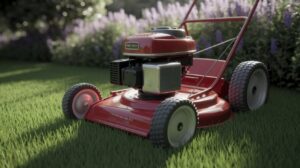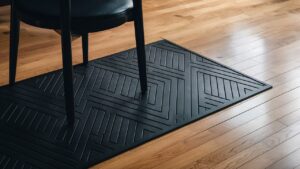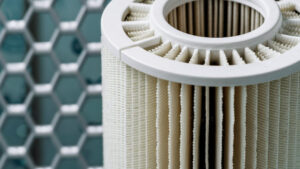Have you ever tossed your clothes into a washing machine and wondered how it magically transforms them from dirty to fresh and clean? Understanding how a washing machine works can seem like unraveling a mysterious puzzle.
But fear not! We’re here to break it down for you in the simplest way possible. Imagine knowing exactly what happens inside that spinning drum, giving you more control and confidence in your laundry routine. This insight not only satisfies your curiosity but also helps you troubleshoot any issues that might arise.
So, if you’ve ever been curious about the inner workings of your trusty washer, you’re in the right place. Let’s dive in and demystify the magic behind how a washing machine really works, making your laundry experience even more rewarding!
Basic Components
Understanding a washing machine’s basic components makes laundry easier. These parts work together to clean clothes efficiently. Let’s explore these essential elements.
Drum
The drum is a circular container. It holds clothes during washing. Made of stainless steel or plastic, it rotates to agitate clothing. This movement removes dirt and stains effectively.
Motor
The motor powers the drum’s rotation. It controls speed and direction. Motors ensure smooth operation during washing cycles. A reliable motor contributes to energy-efficient washing.
Control Panel
The control panel is the machine’s interface. It lets users select wash settings. Buttons and knobs adjust temperature, time, and cycle type. Easy-to-read panels make operation simple.
Water Inlet And Outlet
The water inlet connects to your home’s water supply. It fills the drum with water. The outlet drains used water after each cycle. Together, they manage water flow during washing.

Cycle Process
The cycle process is the heart of any washing machine. It ensures clothes come out clean and fresh. The machine follows several steps in a specific order. Each step plays a crucial role in cleaning. Let’s explore each step in detail.
Water Filling
The first step is water filling. The machine draws water from the household supply. It fills the drum to a specific level. Water temperature depends on the selected wash setting. Cold, warm, or hot. Sensors monitor the water level for efficiency.
Agitation
Agitation follows water filling. The drum moves back and forth. This action helps loosen dirt from clothes. Detergent mixes with water. The mix penetrates fabric fibers. Agitation time varies with different cycles. Longer for heavily soiled clothes. Shorter for delicate fabrics.
Rinsing
Rinsing removes soap and dirt. The machine drains the soapy water first. Fresh water fills the drum again. Clothes are swirled to rinse out detergent. This process may repeat several times. Ensures no soap residue remains.
Spinning
Spinning is the final step. The drum spins rapidly. It forces water out of the clothes. High speed reduces drying time. Clothes emerge damp, not soaking wet. Spin speed depends on cycle choice. Faster spins for cotton. Slower for delicate materials.
Types Of Washers
Washing machines come in different styles, each with unique features. Understanding these types helps in choosing the right one for your needs. Let’s explore the main types of washers available.
Top Load
Top load washers are common and user-friendly. Clothes are loaded from the top. This type is ideal for those with back issues. It doesn’t require bending over. They often use an agitator to clean clothes. This makes them slightly harsher on fabrics. But they are faster and can handle large loads.
Front Load
Front load washers open from the front. They are gentle on clothes. This type uses a tumbling action to wash. Water efficiency is a big plus. They use less water and energy. They spin faster, reducing drying time. But, they can be pricier and need bending to load.
Semi-automatic
Semi-automatic washers have separate wash and spin tubs. You need to manually transfer clothes. They are more affordable and use less water. Perfect for areas with water scarcity. They offer flexibility in the washing process. But require more manual effort compared to others.
Automatic
Automatic washers handle everything with one touch. They control water levels, wash time, and spin speed. This convenience saves time and effort. They come in both top load and front load styles. They offer various programs for different fabrics. But, they can be expensive and use more water than semi-automatic models.
Energy Efficiency
A washing machine works by filling with water, mixing detergent, and agitating clothes using a rotating drum. The drum spins rapidly to remove water during the rinse cycle, making your clothes clean and fresh. This efficient process saves energy and water, ensuring effective cleaning while being environmentally friendly.
Energy efficiency is more than just a buzzword when it comes to washing machines—it’s a necessity. With energy prices on the rise and environmental concerns growing, understanding how your washing machine uses energy can save you money and reduce your carbon footprint. Imagine not only cutting down on your bills but also contributing to a greener planet. Let’s dive into how energy consumption and eco-friendly models play a role in making your washing routine more efficient.
Energy Consumption
Your washing machine’s energy consumption depends on several factors, such as the type of cycle you choose and the machine’s load capacity. Machines with higher energy ratings use less electricity per cycle. This means you save money every time you wash your clothes. Opt for a cold wash whenever possible. It uses less energy since it doesn’t require heating water, which is a major power draw.
Eco-friendly Models
Have you considered upgrading to an eco-friendly washing machine? New models are designed to minimize energy usage without compromising cleaning performance. These machines often come with sensors that adjust water and energy based on the load size. This ensures you’re not wasting resources on smaller loads. Some models even offer an eco mode that uses less water and energy, perfect for everyday laundry. Switching to an eco-friendly model is not just a smart choice for your wallet; it’s a step towards sustainable living. So, next time you’re shopping for a washing machine, ask yourself: Is energy efficiency on my checklist? What steps can you take today to make your laundry routine greener and more cost-effective?
Maintenance Tips
Understanding how a washing machine operates is simple. Water fills the drum. Clothes and detergent are added. The machine agitates, rinses, then spins clothes dry. Regular cleaning and maintenance ensure optimal performance. Check hoses for leaks and keep the drum clean.
This extends the machine’s life.
Maintaining your washing machine ensures its efficiency and longevity. Regular upkeep prevents breakdowns and keeps your clothes fresh. Follow these simple tips for a trouble-free laundry experience.
Regular Cleaning
Clean your washing machine monthly. Remove detergent build-up and dirt. Use a damp cloth to wipe the drum and door seal. Run an empty hot wash with vinegar. This eliminates odors and bacteria.
Avoiding Overloading
Do not overload your washing machine. It strains the motor and reduces cleaning efficiency. Leave space for water and clothes to move. Follow the manufacturer’s weight guidelines. This prevents damage and ensures thorough cleaning.
Checking Hoses
Inspect the hoses regularly for wear or leaks. Replace them every five years. Tighten any loose connections. Ensure there are no kinks or bulges. Proper hose maintenance prevents water damage and flooding.
Troubleshooting Common Issues
Explore how a washing machine works with straightforward steps. Water fills the drum, mixing with detergent. The drum spins, cleaning clothes by agitating them against each other. Finally, it drains and rinses, leaving clothes fresh and clean. Understanding this process helps troubleshoot common washing machine issues.
Is your washing machine acting up? Troubleshooting common issues can feel daunting, but understanding how to tackle these problems can save you time and money. By addressing unusual noises, water leakage, and incomplete cycles, you can maintain your washing machine’s efficiency and extend its lifespan.
Unusual Noises
Hearing strange sounds from your washing machine can be alarming. Before calling a technician, consider checking a few things yourself. Often, the culprit is something as simple as a loose coin caught in the drum or a zipper clinking against the metal. If the noise persists, inspect the machine’s level. A machine that’s not sitting evenly can cause excessive vibrations. Adjust the feet and see if that resolves the issue. Have you ever found a small item lodged in the pump filter? Removing it can work wonders.
Water Leakage
Water leakage is another common problem that can cause panic. First, check the hose connections. A loose or damaged hose could be leaking water. Tighten any loose connections and replace damaged hoses. Sometimes, detergent buildup can clog the drainage system. Regularly cleaning the detergent drawer and the drain pump filter can prevent this. Keep an eye out for cracks in the drum or door seal, as these may also be leaking water.
Incomplete Cycles
A washing machine that stops mid-cycle can be frustrating. Often, this happens due to an unbalanced load. Try redistributing the clothes evenly in the drum and see if the cycle resumes. Power interruptions or timer issues can also halt cycles. Ensure that the machine is getting consistent power supply. If the problem persists, the timer or control board might need a closer look by a professional. Have you ever wondered if a few simple checks could prevent a costly repair? Taking proactive steps and inspecting your machine periodically can be a game-changer. These small efforts can keep your washing machine running smoothly for years.
Frequently Asked Questions
What Are The Main Parts Of A Washing Machine?
A washing machine mainly consists of a drum, motor, and control system. The drum holds clothes and water. The motor rotates the drum to agitate clothes. The control system adjusts settings like speed and temperature.
How Does A Washing Machine Clean Clothes?
A washing machine cleans clothes using water, detergent, and agitation. Water fills the drum and detergent dissolves in it. Agitation helps remove dirt and stains effectively.
What Is The Role Of The Spin Cycle?
The spin cycle removes excess water from clothes. It spins the drum at high speed, forcing water out. This process reduces drying time significantly.
How Does A Front-load Washer Differ From Top-load?
Front-load washers are more energy-efficient and use less water. They tumble clothes horizontally. Top-load washers agitate clothes vertically and may use more water.
Conclusion
Understanding how a washing machine works is helpful. It simplifies your laundry tasks. You now know the basic parts and functions. Recognizing these components can make maintenance easier. It also helps in choosing the right settings. A washing machine handles clothes with care.
It cleans efficiently without damage. Remember to follow the manufacturer’s instructions. Regular cleaning and proper usage extend its lifespan. Now, doing laundry feels less daunting. Enjoy the convenience it brings to your life.







